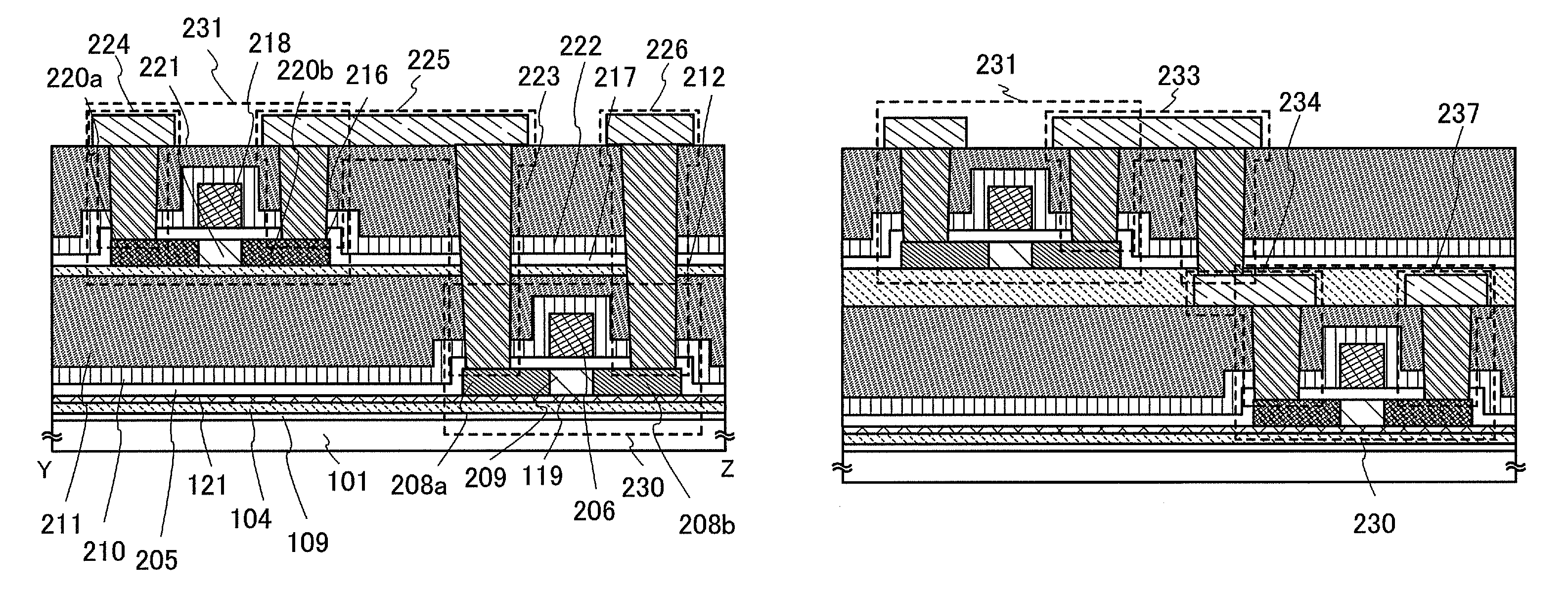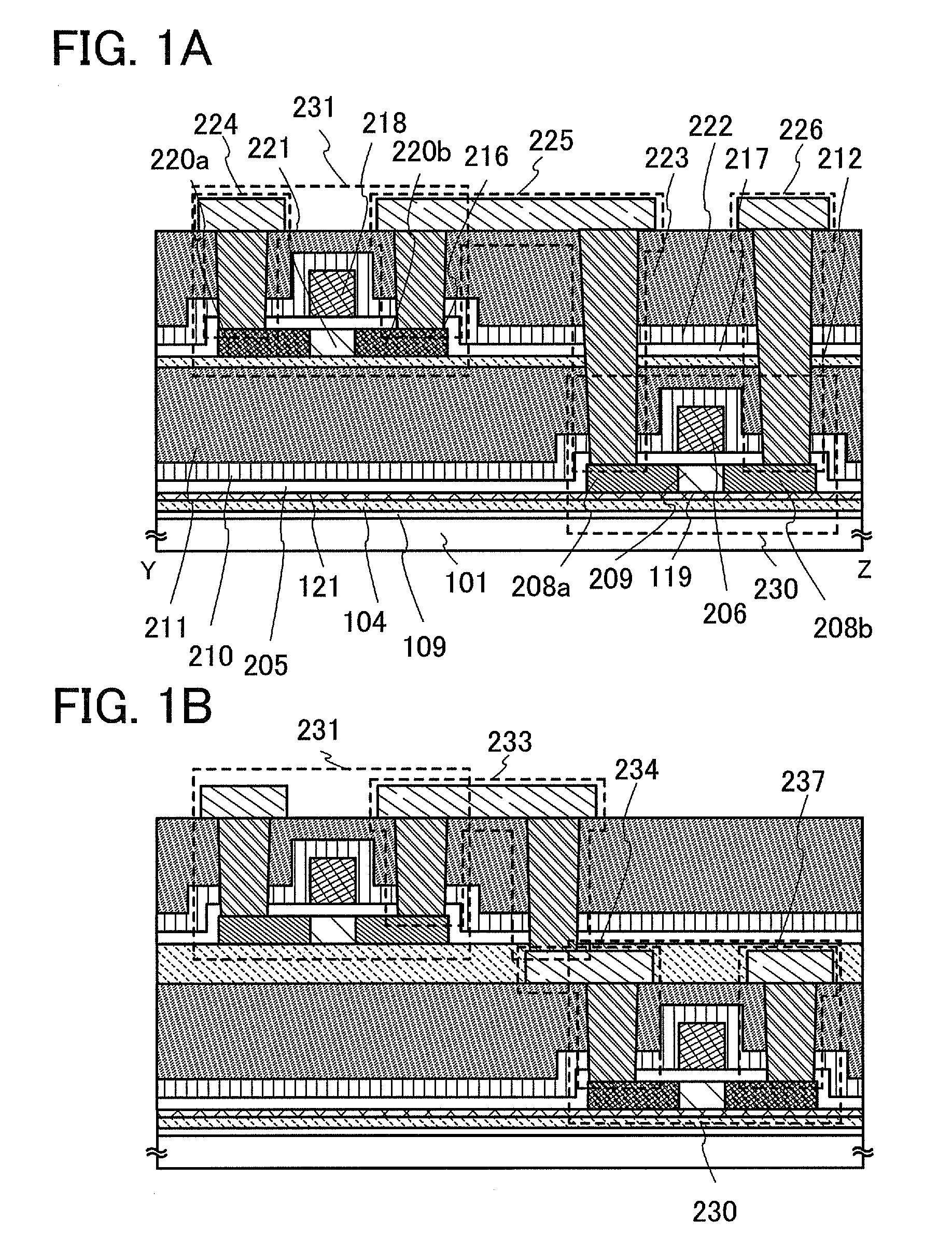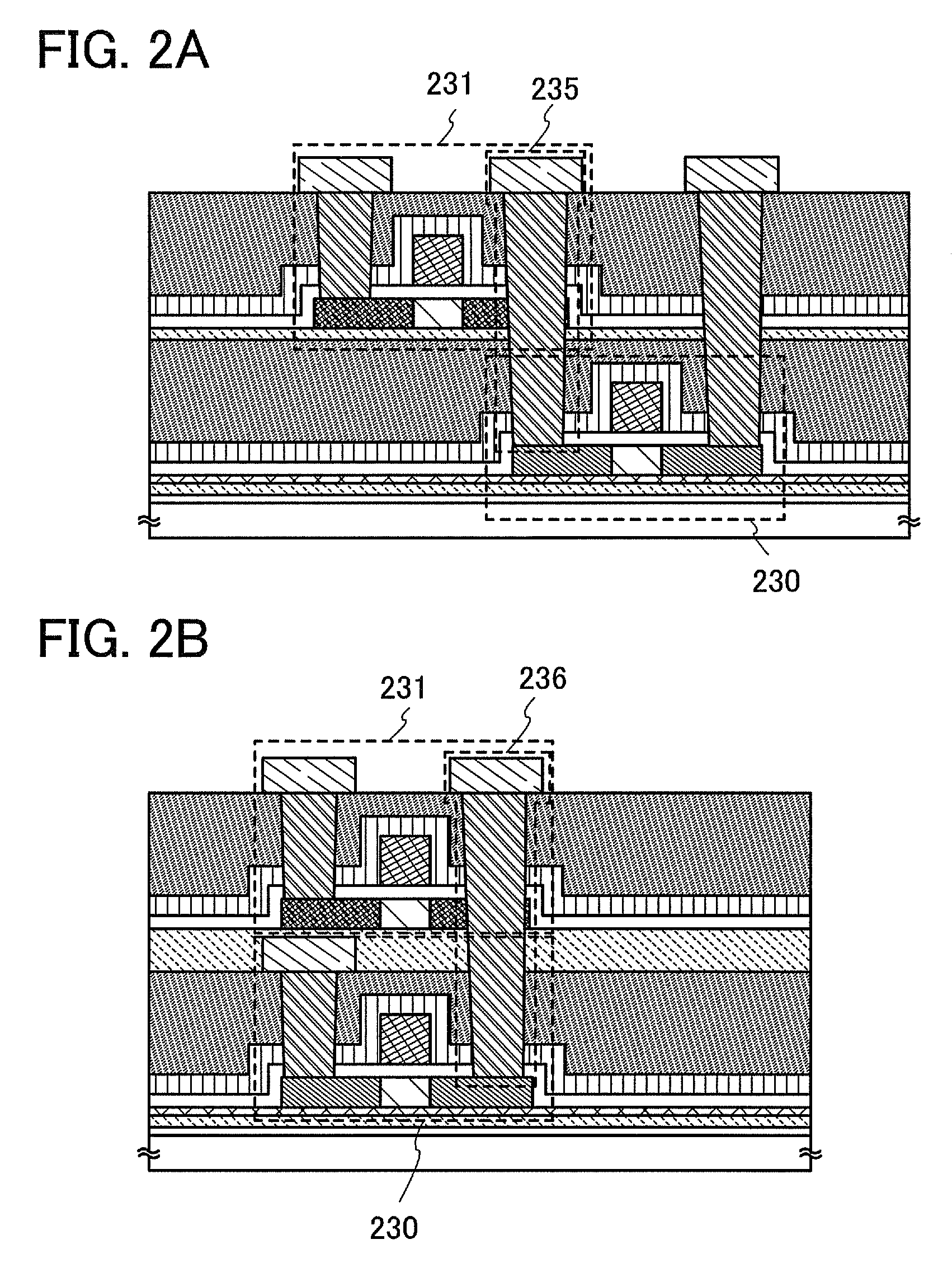Semiconductor device
a technology of semiconductor devices and semiconductors, applied in semiconductor devices, semiconductor/solid-state device details, electrical apparatus, etc., can solve the problems of unbalanced area occupied by n-channel transistors and an area occupied by p-channel transistors, prevented devices from being highly integrated, and unnecessary space for circuit arrangement, etc., to achieve reduced mobility between n-channel field-effect transistors and p-channel field-effect transistors, the effect of reducing power consumption and reducing
- Summary
- Abstract
- Description
- Claims
- Application Information
AI Technical Summary
Benefits of technology
Problems solved by technology
Method used
Image
Examples
embodiment mode 1
[0050]A method for manufacturing a semiconductor device of the present invention is described with reference to FIGS. 1A and 1B, FIGS. 2A and 2B, FIGS. 3A to 3D, and FIGS. 4A to 4D. This embodiment mode describes a complementary metal oxide semiconductor (CMOS) as an example of semiconductor devices which include more highly integrated and higher performance semiconductor elements.
[0051]In this embodiment mode, semiconductor elements having a semiconductor layer which is separated from a semiconductor substrate and is bonded to a supporting substrate having an insulating surface are stacked with an insulating layer interposed therebetween. The semiconductor element which is to be stacked includes a semiconductor element having a semiconductor layer in which a distortion is caused to a channel formation region by an insulating film. A single-crystal semiconductor substrate is preferably used as the semiconductor substrate, and a single-crystal semiconductor layer is preferably formed...
embodiment mode 2
[0179]This embodiment mode describes an example of a step for bonding a semiconductor layer from a semiconductor substrate to a supporting substrate, which is different from that in Embodiment Mode 1. Therefore, repetitive descriptions for the same components as or components having similar functions to the components in Embodiment Mode 1 are omitted.
[0180]In this embodiment mode, when a semiconductor layer is transferred from a semiconductor substrate, the semiconductor substrate is selectively etched (this step is also referred to as a groove processing), and a plurality of semiconductor layers which are divided to have the size of semiconductor elements to be manufactured are transferred to a supporting substrate. Thus, a plurality of island-shaped semiconductor layers can be formed over the supporting substrate. The semiconductor layers which are processed into an element size in advance are transferred; therefore, the semiconductor layers can be transferred to the supporting su...
embodiment mode 3
[0199]This embodiment mode describes an example of a step for bonding a semiconductor layer from a semiconductor substrate to a supporting substrate, which is different from that in Embodiment Mode 1. Therefore, repetitive descriptions for the same components as or components having similar functions to the components in Embodiment Mode 1 are omitted.
[0200]This embodiment mode describes an example in which after a semiconductor layer is separated from a semiconductor substrate, the semiconductor layer is bonded to a supporting substrate.
[0201]As described in Embodiment Mode 2 with reference to FIGS. 5A to 5E, the fragile layer is formed in the semiconductor substrate, and a groove is formed. The groove processing is performed in consideration of the shape of a semiconductor layer of a semiconductor element. That is, in order to transfer the semiconductor layer of the semiconductor element to the supporting substrate, the groove processing is performed on a semiconductor substrate 30...
PUM
 Login to View More
Login to View More Abstract
Description
Claims
Application Information
 Login to View More
Login to View More - R&D
- Intellectual Property
- Life Sciences
- Materials
- Tech Scout
- Unparalleled Data Quality
- Higher Quality Content
- 60% Fewer Hallucinations
Browse by: Latest US Patents, China's latest patents, Technical Efficacy Thesaurus, Application Domain, Technology Topic, Popular Technical Reports.
© 2025 PatSnap. All rights reserved.Legal|Privacy policy|Modern Slavery Act Transparency Statement|Sitemap|About US| Contact US: help@patsnap.com



